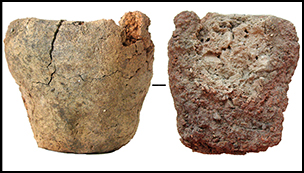Crossref Citations
This article has been cited by the following publications. This list is generated based on data provided by
Crossref.
Luneau, Elise
Martínez Ferreras, Verónica
Abdykanova, Aida
Tabaldiev, Kubatbek
and
Motuzaite Matuzeviciute, Giedre
2020.
The first combined archaeological and archaeometric analyses on Bronze Age pottery from Kyrgyzstan (Uch Kurbu site).
Journal of Archaeological Science: Reports,
Vol. 31,
Issue. ,
p.
102302.
Wang, Wenjun
Ding, Manyu
Gardner, Jacob D.
Wang, Yongqiang
Miao, Bo
Guo, Wu
Wu, Xinhua
Ruan, Qiurong
Yu, Jianjun
Hu, Xingjun
Wang, Bo
Wu, Xiaohong
Tang, Zihua
Niyazi, Alipujiang
Zhang, Jie
Chang, Xien
Tang, Yunpeng
Ren, Meng
Cao, Peng
Liu, Feng
Dai, Qingyan
Feng, Xiaotian
Yang, Ruowei
Zhang, Ming
Wang, Tianyi
Ping, Wanjing
Hou, Weihong
Li, Wenying
Ma, Jian
Kumar, Vikas
and
Fu, Qiaomei
2021.
Ancient Xinjiang mitogenomes reveal intense admixture with high genetic diversity.
Science Advances,
Vol. 7,
Issue. 14,
Spengler, Robert N.
Miller, Alicia Ventresca
Schmaus, Tekla
Matuzevičiūtė, Giedrė Motuzaitė
Miller, Bryan K.
Wilkin, Shevan
Taylor, William Timothy Treal
Li, Yuqi
Roberts, Patrick
and
Boivin, Nicole
2021.
An Imagined Past?.
Current Anthropology,
Vol. 62,
Issue. 3,
p.
251.
Tian, Duo
Festa, Marcella
Cong, Dexin
Zhao, Zhijun
Jia, Peter Weiming
and
Betts, Alison
2021.
New evidence for supplementary crop production, foddering and fuel use by Bronze Age transhumant pastoralists in the Tianshan Mountains.
Scientific Reports,
Vol. 11,
Issue. 1,
Doumani Dupuy, Paula N.
Luneau, Elise
and
Rouse, Lynne M.
2021.
Pluralising power: ceramics and social differentiation in Bronze Age central Eurasia.
World Archaeology,
Vol. 53,
Issue. 5,
p.
779.
Dodson, John
Jia, Peter Weiming
Betts, Alison
and
Cong, Dexin
2022.
Environmental change and the timing of the settlement of the Bronze Age Andronovo culture, in far northwest Xinjiang, China.
The Holocene,
Vol. 32,
Issue. 1-2,
p.
81.
Grillo, Katherine M.
McKeeby, Zachary
and
Hildebrand, Elisabeth A.
2022.
“Nderit Ware” and the origins of pastoralist pottery in eastern Africa.
Quaternary International,
Vol. 608-609,
Issue. ,
p.
226.
Tan, Bo
Wang, Hongwei
Wang, Xiaoqin
Yi, Suyan
Zhou, Jing
Ma, Chen
and
Dai, Xinyan
2022.
The study of early human settlement preference and settlement prediction in Xinjiang, China.
Scientific Reports,
Vol. 12,
Issue. 1,
Yu, Chong
You, Yue
Luo, Jiaming
and
Ruan, Qiurong
2022.
The Late Bronze Age pastoralist settlement at Halehaxite in the Tianshan Mountains, Xinjiang, China, a zooarchaeological perspective.
Journal of Archaeological Science: Reports,
Vol. 45,
Issue. ,
p.
103595.
Tian, Duo
Li, Jingbo
Wang, Yongqiang
Dang, Zhihao
Zhang, Xiangpeng
Li, Chunchang
and
Xu, Youcheng
2023.
Unveiling the Dynamics of Millet Spread into Xinjiang: New Evidence of the Timing, Pathways, and Cultural Background.
Agronomy,
Vol. 13,
Issue. 7,
p.
1802.
Wang, Yuxuan
Monteith, Francesca
Xi, Tongyuan
Ren, Meng
Li, Daren
Hu, Songmei
Wang, Jianxin
Festa, Marcella
and
Ma, Jian
2023.
New evidence for regional pastoral practice and social complexity in the Eastern Tianshan Mountains in the first millennium BCE.
Scientific Reports,
Vol. 13,
Issue. 1,
Qu, Yating
Rao, Huiyun
Cui, Jianxin
Abuduresule, Idelisi
Li, Wenying
Hu, Xingjun
Jin, Pujun
and
Yang, Yimin
2024.
Stable carbon and nitrogen isotope analysis of various organism remains from the early Bronze Age sites in Xinjiang, China.
Chinese Science Bulletin,
Vol. 69,
Issue. 28-29,
p.
4311.
